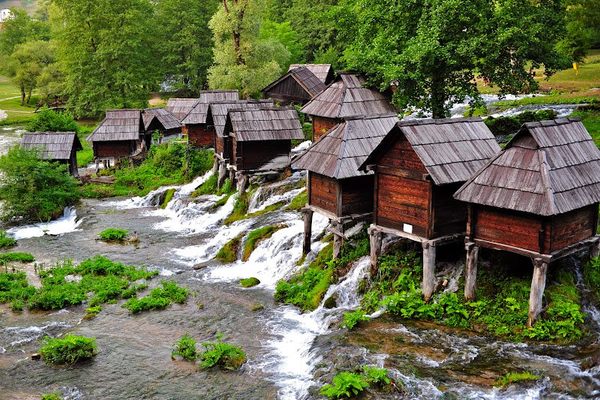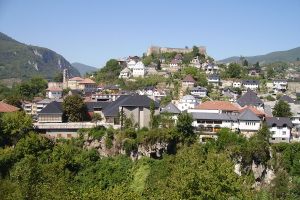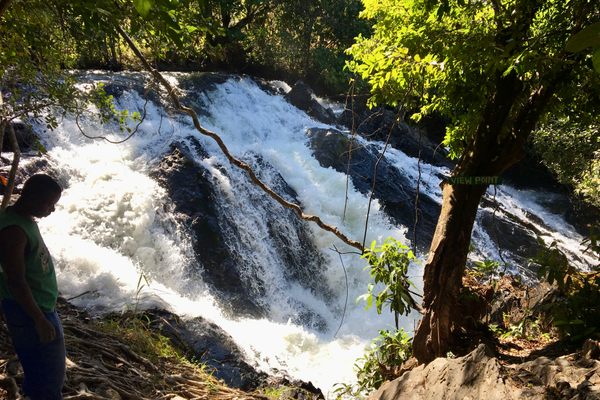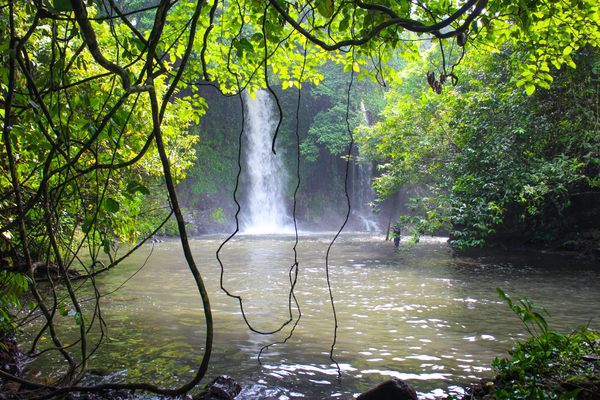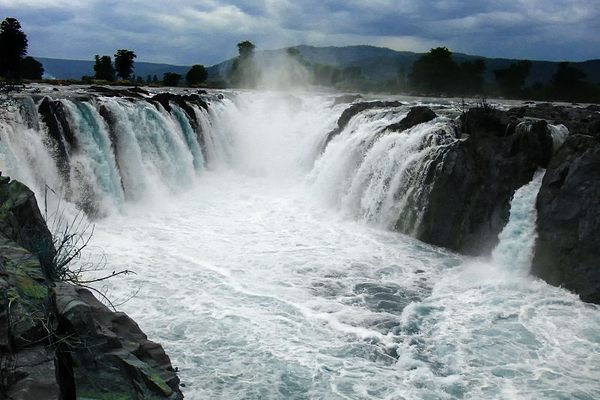About
Jajce, in the central region of Bosnia and Herzegovina, is a historic city all about falling water. Famous for its enormous waterfall in the middle of town, the meeting of two rivers – the Pliva and the Vrbas – established the region in the 14th century as the capital of the then Kingdom of Bosnia. There’s a town castle, old fortified city walls, high mountains and deep river valleys. And just downstream, in the area of the Pliva Lakes, is a collection of about 20 little huts that once served as watermills for local farmers.
The little windowless huts sit on top of skinny stilts right over the gushing water. Since the flow here is spread out, by using a series of little mills instead of one big water wheel, the diffuse water power could be aggregated. Pretty ingenious. Most of the huts go back to the period of the Austro-Hungarian empire (about 1867 to 1918), and they give the impression of a little storybook village.
No longer used for actual milling, the Pliva Lakes watermills draw tourists down the river from the giant waterfall in town. That one is certainly impressive with its showy 65-foot drop. But the little shingled watermills feel like they might be home to some local trolls, with their dragons hitched up out back.
Related Tags
Know Before You Go
About 3 miles (5km) west of Jajce, following the M5 to Plivka Lakes Park
Balkans Road Trip: Serbia, Croatia & Bosnia and Herzegovina
Traverse the beauty and history of the Balkans through locals' stories.
Book NowCommunity Contributors
Added By
Published
January 18, 2016
